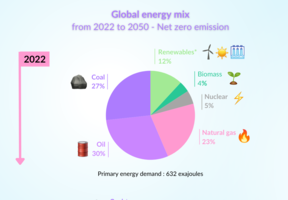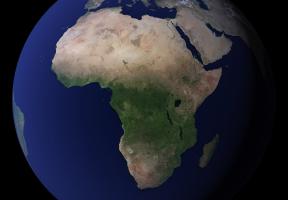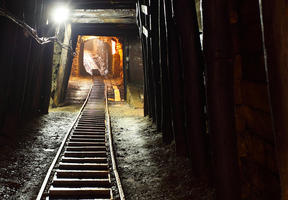How Is Coal Formed – A Process Spanning Eras
5 min read
Like oil and natural gas, is a fossil . It started forming over 350 million years ago, through the transformation of organic plant matter.

© THINKSTOCK - Coal was formed more than 300 million years ago.
It all starts with a swamp on the edge of a , such as a lagoon or a lake. Tectonic activity raises sea levels, covering and killing vegetation. Plant debris accumulates and is buried under layers of mud and sand in a process known as sedimentation. This protects the debris from the air and slows down the decomposition process. The vegetation grows back, until the next flooding.
The sedimentary basin gradually sinks under the weight of the sediments, and the layers of dead plants are subjected to rising temperatures that gradually “cook” them, leading to their transformation. The different stages of sedimentation turn cellulose, the main component of wood, from peat to (brown ), then sub-bituminous coal, followed by bituminous coal and, finally, . Anthracite has the highest carbon content.
Geological Time For The Formation of Coal
The most favorable conditions for the formation of coal occurred 360 million to 290 million years ago, during the Carboniferous (“coal-bearing”) Period. However, lesser amounts continued to form in some parts of the Earth during all subsequent periods, in particular the Permian (290 million to 250 million years ago), and throughout the Mesozoic Era (250 million to 65 million years ago).
The accumulated plant matter buried during the Tertiary Era — less than 65 million years ago — is generally less mature. It is often in the form of lignite, which still contains a high content of volatile matter (bitumen and decayed wood) and has a lower carbon content. However, there is also some higher rank coal from the Tertiary Era, coal that matured early, heated by plate tectonics. Examples of this include Paleocene coal (65 to 55 million years ago), found in Columbia and Venezuela, and Miocene coal (20 million years ago), found in Indonesia. In Indonesia, where the gradient is very high, anthracite lies close to the surface.
However, the deposits in the Moscow Basin have never gone beyond the lignite stage. It’s too cold!
Finally, recent accumulations (from 10,000 years ago to today) are very rich in fibrous debris known as peat, in which the shapes of branches and roots can still be discerned. This material was not buried deep enough to contain elemental carbon.
The Different Types of Coal
There are several different types of coal. They are ranked according to their carbon and volatile matter content.
- Anthracite is 86 to 98% pure carbon and 8 to 3% volatile matter. It is an excellent that is still used to heat homes.
- Bituminous coal contains 70 to 86% carbon and 46 to 31% volatile matter. It is used to make , used in metallurgy.
- Sub-bituminous coal is 70 to 76% carbon and 53 to 42% volatile matter. It is burned in industrial boilers.
- Lignite is 65 to 70% carbon and 63 to 53% volatile matter. It is a low-grade fuel with a high moisture content that is used in industrial boilers.
- Peat consists of partially decomposed vegetation. Technically speaking, it isn’t coal. It has a carbon content of less than 60% and is composed entirely of volatile matter. A poor fuel that was once used throughout Europe in the form of dried briquettes for heating, today it is used only in a few regions, such as Ireland.



















